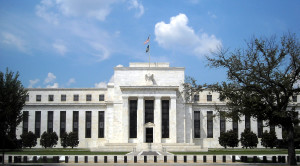by Frank Shostak – Mises Daily:
For the head of the Federal Reserve Board Janet Yellen — and most economists — the key to economic growth is a strengthening in the labor market. The strength of the labor market is the key behind the strength of the economy. Or so it is held. If this is the case then it is valid to conclude that changes in unemployment are an important causative factor of real economic growth.
This way of thinking is based on the view that a reduction in the number of unemployed persons means that more people can now afford to boost their expenditures. As a result, economic growth follows suit.
We Need More Wealth, Not Necessarily More Employment
The main driver of economic growth is an expanding pool of real wealth, gained through deferred consumption and increases in worker productivity. Fixing unemployment without addressing the issue of wealth is not going to lift economic growth as such.
It is the pool of real wealth that funds the enhancement and the expansion of the infrastructure, i.e., an expansion in capital goods per individual. An enhanced and expanded infrastructure permits an expansion in the production of the final goods and services required to maintain and promote individuals’ lives and well-being.
If unemployment were the key driving force of economic growth then it would have made a lot of sense to eradicate unemployment as soon as possible by generating all sorts of employment.
It is not important to have people employed as such, but to have them employed in wealth-generating activities. For instance, policy makers could follow the advice of Keynes and his followers and employ people in digging ditches, or various other government-sponsored activities. Note that the aim here is just to employ as many people as possible.
A simple commonsense analysis however quickly establishes that such a policy would amount to depletion in the pool of real wealth. Remember that every activity, whether productive or non-productive, must be funded. When the Fed or the federal government attempt to increase employment through various types of stimulus, this can result in the expansion of capital goods for non-wealth generating projects which leads to capital consumption instead of growth.
Hence employing individuals in various useless non-wealth generating activities simply leads to a transfer of real wealth from wealth generating activities and this undermines the real wealth-generating process.
Unemployment as such can be relatively easily fixed if the labor market were to be free of tampering by the government. In an unhampered labor market, any individual that wants to work will be able to find a job at a going wage for his particular skills.
Obviously if an individual demands a non-market related salary and is not prepared to move to other locations there is no guarantee that he will find a job.
For instance, if a market wage for John the baker is $80,000 per year, yet he insists on a salary of $500,000, obviously he is likely to be unemployed.
Over time, a free labor market makes sure that every individual earns in accordance to his contribution to the so-called overall “real pie.” Any deviation from the value of his true contribution sets in motion corrective competitive forces.
Purchasing Power Is Key
Ultimately, what matters for the well-being of individuals is not that they are employed as such, but their purchasing power in terms of the goods and services that they earn.
It is not going to be of much help to individuals if what they are earning will not allow them to support their life and well-being.
Individuals’ purchasing power is conditional upon the economic infrastructure within which they operate. The better the infrastructure the more output an individual can generate.
A higher output means that a worker can now command higher wages in terms of purchasing power.
Article originally posted at Mises.org.




